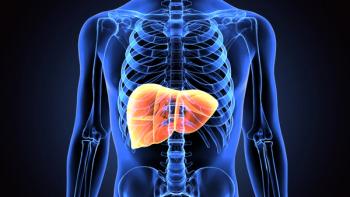
Study Reveals High Hepatitis C Prevalence in Pregnant Women
In 2019, the worldwide burden of HCV exceeded 58 million people, with 14.9 million infections occurring in women aged 15 to 49 years.
Hepatitis C virus (HCV) prevalence is relatively high among pregnant women, and while mother-to-child/vertical transmission (MTCT) is generally a less common route of HCV, it has been identified as the main cause of pediatric hepatitis C, according to a study recently published in THE LANCET Discovery Science’s
HCV infection poses a global health challenge, impacting millions annually.
In 2019, the worldwide burden of HCV exceeded 58 million people, with 14.9 million infections occurring in women aged 15 to 49 years.
The virus spreads primarily through infected blood transfusions, therapeutic injections, intravenous drug use or blood products, sexual transmission, and MTCT.
In particular, around 5.8% of pregnant women with HCV pass the virus to their babies, and this rate rises to 10.8% if the pregnant women are co-infected with both HCV and HIV.
To track progress towards the WHO's goal of eliminating HCV by 2030, it's crucial to have a better understanding as knowledge behind the association of HCV and pregnant women is poor.
In this study, researchers conducted a systematic review and meta-analysis of almost 200 observational studies from January 1, 2000, to April 1, 2023, gathered from PubMed/MEDLINE, Web of Science, Embase, Scopus, and SciELO databases.
The researchers conducted a sensitivity analysis to examine how four particularly large studies influenced the overall global prevalence. They also explored the association between potential risk factors and HCV positivity in pregnant women using subgroup and meta-regression analyses.
Of 192 eligible studies involving 148,509,760 pregnant women from 53 countries, the prevalence of HCV in pregnant women was 1.80% (95% CI, 1.72–1.89%) and 3.29% (3.01–3.57%).
Data shared that the Eastern Mediterranean region showed the highest prevalence at 6.21% (4.39–8.29%), while the Western Pacific region had the lowest at 0.75% (0.38–1.22%).
Findings also revealed a higher HCV prevalence in pregnant women with opioid use disorder (51.94%, 95% CI: 37.32–66.39) and HIV infection (4.34%, 95% CI: 2.21–7.06%) compared to the general population (1.08%, 95% CI: 1.02–1.15%).
Also identified were decreasing trends in virus prevalence with higher human development index levels and various risk factors such as older age, lower education, sexual activity, history of medical procedures, and positive hepatitis B tests.
The study revealed a major burden of HCV exposure in pregnant women, ranging from 2.2 to 5.3 million cases.
However, because of variations between studies, estimates may differ from the actual prevalence, according to researchers.
These findings highlight the importance of expanding HCV screening for pregnancy-prone women, especially during pregnancy, particularly in countries with a higher prevalence.
Researchers suggest the need for more studies regarding the safety of existing therapeutic drugs during pregnancy and potentially developing drugs specifically for pregnant women.
Newsletter
Get the latest industry news, event updates, and more from Managed healthcare Executive.


















































